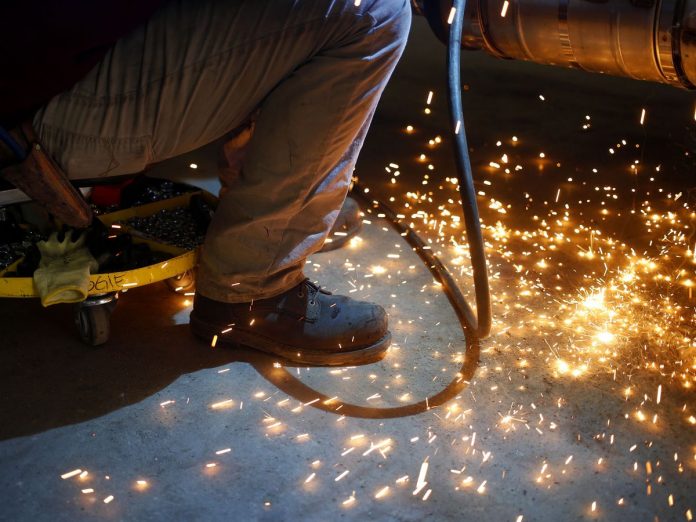
NEW YORK – United States hiring cooled in September by more than forecast, wage gains eased slightly and the jobless rate fell to a 48-year low, illustrating a tight labor market as well as the impact of Hurricane Florence.
Nonfarm payrolls rose 134,000 after a 270,000 gain the prior month that reflected a large upward revision, a Labor Department report showed Friday. The median estimate in a Bloomberg survey called for an increase of 185,000 jobs. Average hourly earnings climbed 2.8 percent from a year earlier, matching projections, while the jobless rate fell more than projected to 3.7 percent, the lowest since 1969.
While Florence probably affected the figures during the month, hiring may settle into a more sustainable pace after a strong run that has pushed the economy closer to full employment and reinforced expectations for a fourth interest-rate hike by the Federal Reserve this year. President Donald Trump’s tax cuts are boosting employment, yet growth in worker pay remains relatively tepid at a time inflation is rising and the trade war with China poses risks.
“You really can’t put any stock at all in a weak payroll number that comes after a major storm in the survey week,” Thomas Simons, an economist at Jefferies LLC, said before the report. “There will be displacements, and distortions. I’d expect a solid rebound in the next month,” as other data indicate “it’s a very strong labor market.”
Hurricane Florence affected parts of the East Coast during the September reference periods for the surveys for payrolls and the national unemployment rate, the Labor Department said in a special note Friday. Data-collection rates were within normal ranges for both surveys.
The fallout from Florence was apparent in employment at restaurants and bars, an industry where most workers only get paid if they show up to work. That category saw an 18,200 decrease in payrolls, according to the report.
Florence-related flooding and damage in North Carolina and South Carolina was expected to influence the data, though on a smaller scale than the 2017 disruptions from hurricanes Harvey and Irma. Economists have said any weather-related volatility in the data may be short-lived, similar to the pattern around past storms. That means the jobs report data may not give an accurate picture of the health of the labor market for some time.
Other reports indicate the weather volatility is fading. Figures issued Thursday showed applications for unemployment benefits fell in the week ended Sept. 29 following a storm-related surge in the prior week, and claims are once again near the lowest level in almost five decades.
Here are the highlights of some of the most closely-watched components of the report:
Payrolls
Revisions added a total of 87,000 jobs to payrolls in the previous two months, according to the figures, resulting in a three-month average of 190,000. Hiring data may show storm- related swings for October too, economists said.
Details across industries showed construction payrolls rose by 23,000 and manufacturing added 18,000 jobs. That’s consistent with other reports showing strength in such activity. Service providers increased payrolls by 75,000 workers, the lowest in a year, as retail also showed a 20,000 decline.
The Labor Department said 299,000 people weren’t at work due to bad weather, reflecting the storm’s impact. That compares with 23,000 in August, though the September 2017 count of 1.47 million – following hurricanes Harvey and Irma – was the highest since 1996.
Private employment rose by 121,000, compared with a median estimate of 180,000. Overall government payrolls increased by 13,000.
Wages
Average hourly earnings rose 0.3 percent from the prior month, matching estimates, following a downwardly revised 0.3 percent gain, the report showed. The annual advance of 2.8 percent followed a 2.9 percent gain in August. Economists had penciled in some cooling in the year-over-year results, as a strong number for September 2017 wages presented a difficult comparison.
A separate measure, average hourly earnings for production and non-supervisory workers, increased 2.7 percent from a year earlier, after a 2.9 percent gain.
The average workweek for all private employees was unchanged at 34.5 hours. A shorter workweek has the effect of boosting average hourly pay.
Through most of the current expansion, wages have grown at a lackluster pace while other measures showed more progress, such as declines in the unemployment rate. Some companies are starting to boost wages – Amazon.com Inc. being among the latest to pledge raises – to attract or retain workers.
Unemployment
The latest drop in the jobless rate puts it further below Fed estimates of levels sustainable in the long run. At the same time, some measures showed the labor market may still have some room for further improvement.
The U-6, or underemployment rate, rose to 7.5 percent from 7.4 percent. That gauge includes part-time workers who’d prefer a full-time position and people who want a job but aren’t actively looking.
The participation rate, or share of working-age people in the labor force, was unchanged at 62.7 percent. The employment- population ratio, another broad measure of labor-market health that central bankers like to watch, rose to 60.4 percent from 60.3 percent.
While better prospects for employment are helping to draw in people from the sidelines of the job market, boosting the participation rate, economists anticipate that retiring workers will put downward pressure on participation over coming years.
Shobhana Chandra is a reporter for Bloomberg News.












